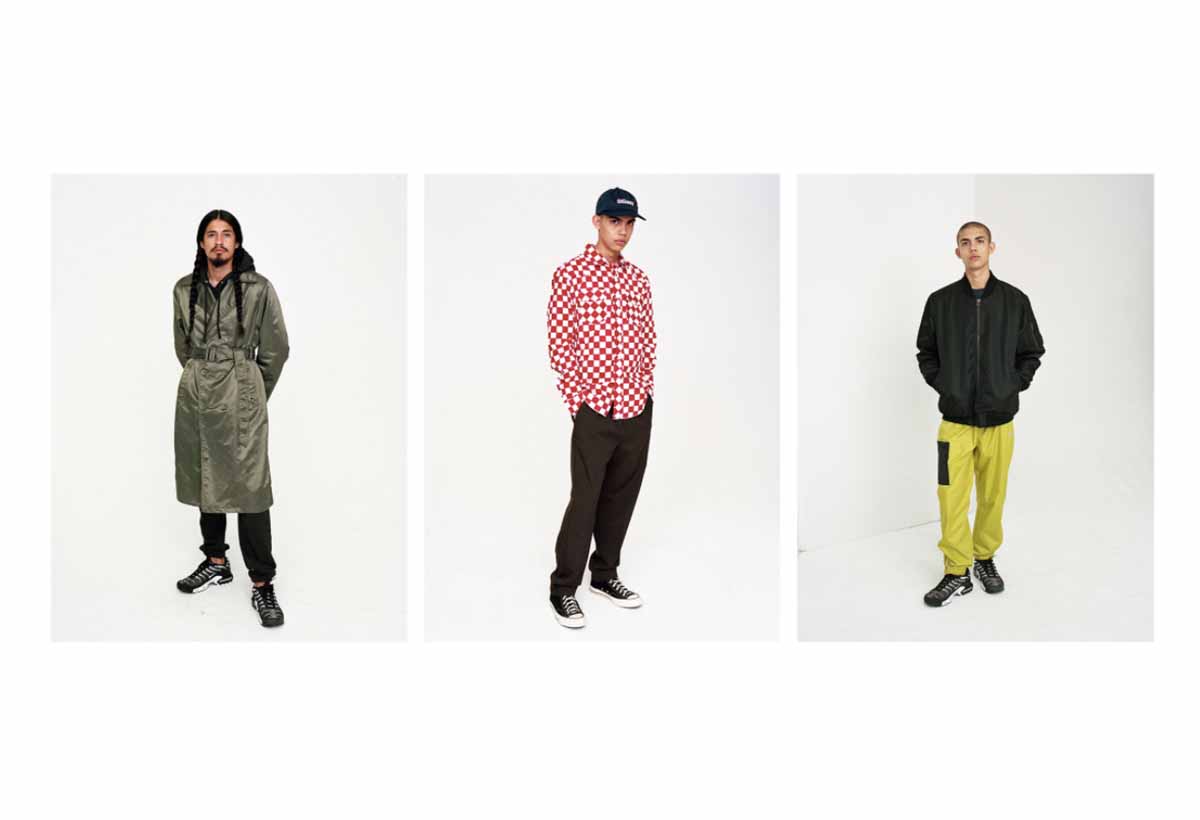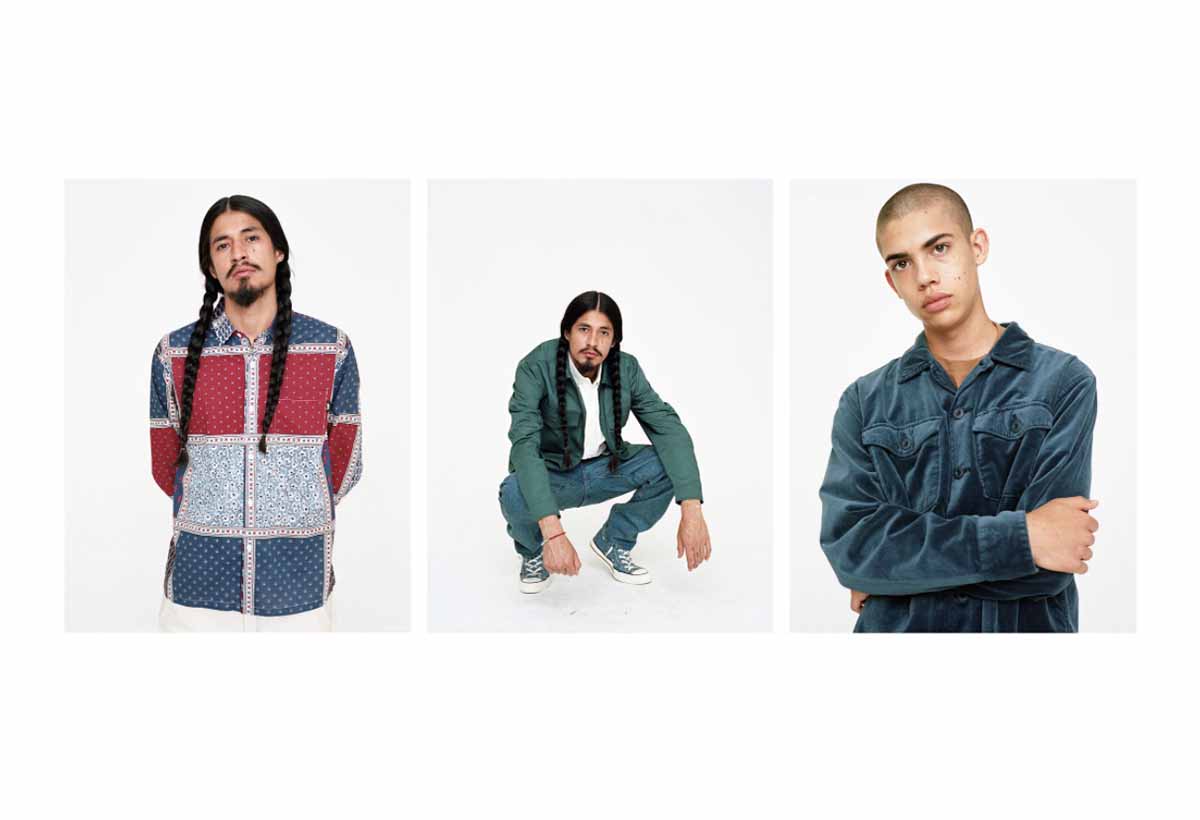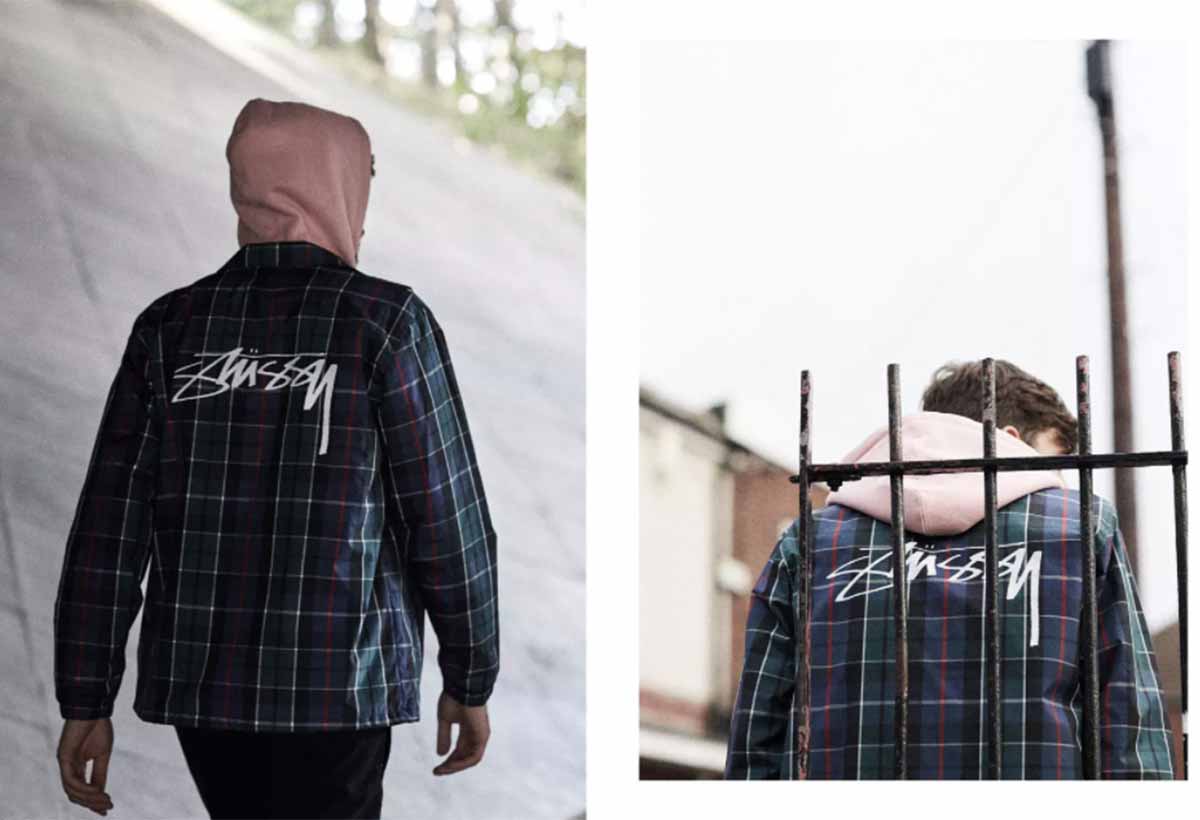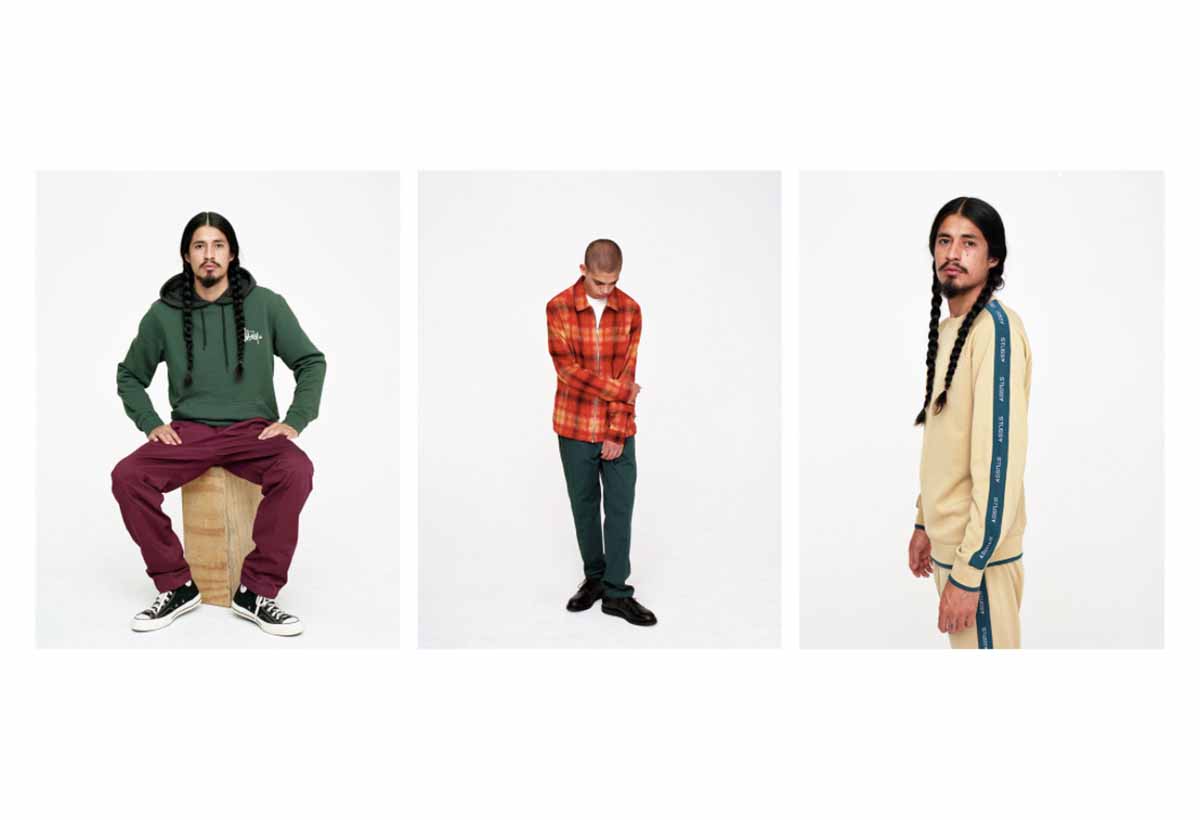A look into Stussy History
Artists have goals that involve the almost childlike fascination with just making things – actually being creative. Stussy history starts in that form of artistic purity. Creatives have a small selection of lifelong dreams.
This doesn’t suggest that the goals limit themselves to financial or otherwise. But, it’s usually a fairly simple breakdown.
Stussy’s roots begin the way many successful brands do, centering on a passion project. Yet, what follows is a fashion powerhouse.
Though it seldom earns the praise of more runway-friendly labels, Stussy continues to be in a rare class of massive profitability.
It begs the question of how all of this came to be.
Behind Stussy History:
Shawn Stussy starts his particular fashion story completely outside of the industry. He is, for any era, the epitome of California surf culture.
In fact, the notion of actually designing and selling clothing is almost entirely accidental. It all starts with his love for surfing.
Shawn comes up with the idea of crafting surfboards. Beyond contributing to his favorite past time in a meaningful way, there are no real financial goals here.
After all, he was just 13 when he began his design work. The highlight of these designs is the Stussy signature, written using a dark marker.
The signature itself stands out because it is in thick strokes. That only becomes a concern when Shawn decided to open up his own Laguna Beach surf shop in 1979.
At this point, at the age of 24, he accrues a ton of experience as a surfboard designer. The Stussy history and story for that matter was still like an inception.
Now that it is officially a small enterprise, brand considerations become more important. This mentality is what leads to the standout Stussy signature, to begin with.
Shawn makes sure to lay the label on thick, distinguishing it from would-be competitors. Then, he diversifies. The history of Stussy brand was about to begin.

From the Spring 2018 Campaign
Stussy Brand History Begins
To help the surfboards sell, he decided to accompany them with the sale of Stussy clothing as well. From a business standpoint, this is a pretty standard move.
The apparel line also sports the Stussy signature, and looks initially to help spread the name beyond the surfboard niche – anyone who wore a Stussy hat, for example, is now a walking ad for the surfboards.
Crucially, the surfing element is still the main focus of the brand. The clothing does well, selling in great numbers to local denizens. Well, the marketing effect works really well for Shawn’s brand. But, it comes about with a surprising result.
Instead of bolstering surfboard sales, a demand for the clothing line quickly rises. All of a sudden, Shawn finds himself spending a lot more time on the clothing aspect than the brand’s original purpose.
Frankly, this is a big part of what kept the small business going at the time. Laguna Beach has been surf country for a long time, during which several brands establish themselves as surfboard providers.
In actuality, establishing Stussy in the early surfboard niche was always going to be a massive uphill climb. This is part of what makes Stussy clothing such a happy accident.

Abstract, via the Spring 2018 Campaign
The History of Stüssy is all About Growth
By the early 1980s, Stussy establishes itself as a permanent fixture in the fashion world. The iconic signature makes for a very memorable addition to just about anything the brand can sell.
In short, Shawn Stussy now has a clothing gold mine. Soon after, there comes a point in the history of Stussy when scale becomes an issue.
The brand’s position among fans and the larger industry is all good and well. But, the sheer growth in demand calls for some business acumen.
Shawn is, at his core, always a lifelong surfer who just happens to be selling clothing and surfboards.
That’s where Frank Sinatra Jr. comes in. In 1984, the savvy accountant goes into partnership with Shawn on the brand. Following this deal, they decide on a critical project in the history of Stussy.
Sinatra Jr. convinces Shawn that it’s time they officially launch an apparel line. Up to this point, the clothing options are meant to bolster surfboard sales.
But, noticing how increasingly popular their garments are, it’s tough to justify staying the course and not branching out fully into apparel.

More from the Spring 2018 Campaign
Cultural Context
Even more, reason to take this course of action involves the timing. The 1980s are just about the perfect time to explore the fashion industry. Typically, the United States makes for a fairly aggressive environment when it comes to the clothing business. It isn’t always easy to wade into these waters.
But, there are moments in history when a society yearns particularly for something different, something new. For large parts of the United States, that time is the 1980s. Up to this point, fashion entrenches itself in a few philosophies.
The 60s provide a good ground for playing within the lines of largely conservative fashion. The 70s are the somewhat extreme opposite of this. During this time, the visual excess is all the rage.
From the color palettes to the brash styles, the 1970s are all about making a statement.
The decision to go into apparel at the beginning of the 80s fills a need for something that holds back a bit. In contrast to years gone by, the debut of Stussy’s dedicated clothing line positions the brand as a happy medium between self-expression and minimalism.
As one of the seminal names in streetwear, the history of Stussy suggests that it does fine when it comes to standing out a bit more. But, the subtle design cues help the brand initially connect with a wide base.

An assortment of looks via the Spring 2018 Lookbook
Globe Trotting
That base of fans roots itself, and the brand, in the idea of authenticity. Shawn understands from early on what his brand stands for and what it signifies. With that in mind, he sets on a course of travel that takes him to cities such as Tokyo, London, and Paris.
Along the way, he meets and connects with DJs, artists, and designers who share his cultural tastes in music and art. These interactions turn into the seeds of a global following. More importantly, they also inform major elements of Stussy designs.
Some of the names that Shawn considers colleagues at this time are Luca Benini and Hiroshi Fujiwara. They contribute to how the Stussy brand is seen even today. These names also contribute to the history of Stussy by spreading even wider Shawn’s fashion philosophies.
Fujiwara and Benini, among others, share the Stussy founder’s idea of fashion being an expression of lifestyle. Shawn’s brand starts as one of freedom and living via passion, and he wants his clothing to reflect this.
As he tours city after city, he and his peers make sure that everyone and anyone who is interested understands what they’re about.

More Spring 2018 heat
Cultural Capital
As Shawn Stussy’s brand travels the globe, the founder feels the influence of everything he sees. The different visuals and sounds he experiences crucially lead to the Stussy we know today.
In the 80s, hip-hop meanders its way through the global conscience. The anti-establishment tone and antagonistic vibes mesh well with streetwear culture.
Much the musical genre, fashion has a bit of a sampling habit when it comes to this. Music, as Shawn saw it, exists in a cultural plane that is just as important as that of fashion.
At the same time, surfer culture is no less dominant. The freewheeling and unrestrictive notion of surfing – the Cali lifestyle – continues with strength through the 1980s.
So, as any sharp businessman might, Shawn takes a step to use the influence of both cultures. His love for hip-hop is just as evident in early Stussy designs as his lifelong passion for surfing.
In an interesting turn, both of these lifestyle elements actually come together fluently when it comes to fashion.
From the standpoint of aesthetics, the looser and more forgiving fits that both surfwear and hip-hop represent are just what the doctor ordered. The 1980s are a time when consumers are starving for something more restrained.
Out of that consumer need comes a preference for things like comfort and durability. And yet, the prevalence of graphics looks don’t go anywhere. Stussy’s early work sees the influence of eye-popping magazines, such as I-D, as well.

Cruize Coach jacket and the Basic Hoody, from the 2017 Spring Collection
Downturn
The formative years of Stussy include a whole lot of creativity, travelling, and success. It’s easy to imagine how bright the prospects look for the brand at that point.
But, as many companies experience at some point or another, there is a palpable swinging of fortunes. As Stussy manages to maintain its name back home, thanks to global influences, the 1990s hold a different outlook.
The background to this drop-off is, ironically, hip-hop. Shawn Stussy does welcome and even glorify the aesthetic. But, the stylings of the genre eventually become the only thing anyone wants to talk about.
The early 90s see quite the boom in the aggressive “urban” looks. Brands like FUBU start to skyrocket in both sales and influence. This leads to the very quick creation of a new market niche. Unfortunately for Stussy, that niche takes even less time to dominate the market.

Via the Spring 2018 Collection
Tougher Times
As the 90s roar by, the brand faces a battle for its sales. Revenue is steady but profits continue to dwindle. Up until 1995, Sinatra worries but feels understandably safe because Shawn Stussy is still the creative force behind the brand.
That security evaporates in 1996 when the brand’s principal founder announces he is retiring from his involvement with Stussy. Shawn reportedly sites a need to spend more time with his wife and family.
Sinatra, who spends years surfing with Shawn before their business venture, understands his partner’s decision. But, Shawn’s departure nonetheless comes just before the brand’s most difficult years.
The following year represents the sharpest drop in the history of Stussy. In total, 1996 was a year that saw the brand make $14 million less in revenue.
Now, revenue numbers are a funny concept because they are often misleading. Despite that steep decline, Stussy reportedly turns a profit every single year it remains in business.
Frank Sinatra Jr., son of the original co-founder of Stussy, often notes that the company continues to be “in the black” through even their toughest years.

Stussy hooks their wears up with Gore-Tex, check out the official campaign
New Creative Direction
As Stussy finds its way through these years of struggle, the company takes a new direction. Frank Sinatra Jr. takes over from his father and decides to bring in a new creative team.
This is where Nick Bowers comes in. He brings in years of experience in the fashion world, a highlight of which is time spent at Valentino. Additionally, Stussy finds itself a new creative director in Paul Mittleman.
One piece of good fortune for the brand at this time involves their archival advantage. The new creative team has the privilege of accessing the deep archives of the brand’s past.
Nearly all of the history of Stussy visuals are right there in front of them. Though Shawn himself steps away from the day-to-day business, his work continues to be an inspiration for the company’s new team.
With some fresh new eyes in tow, Stussy meanders a bit through the Shawn-less years. Crucially, it’s important to emphasize that the clothing brand remains profitable throughout this time. In fact, Stussy spends an interesting amount of time allegedly trying not to be too profitable.

Weatherproof cap, from the Gore-Tex Campaign
Going Global
As we mentioned earlier, Shawn Stussy takes his brand’s early vision around the world. That global trek, from country to country, develops quite the international following.
As it turns out, Sinatra Jr. notices just how massive that following gets over the years. The American sales remain respectable but seem minuscule in comparison to global figures. In response, the company shifts its focus a bit.
Sinatra Jr. opts to do more business in the Japanese streetwear market. At the time, the streetwear scene in Japan flourishes thanks to names such as Shinsuke Takizawa.
As that market bolsters the brand, the history of Stussy sees it proliferate in Europe as well. One of the key distribution points comes via Slam Jam Socialism.
Combining those two factors lead to the state of Stussy that the brand identifies with today. Reportedly, Stussy’s business and revenue split at 60-40, with global markets leading the way over U.S. sales.
To this day, the American figures do noticeable less for Stussy than their international sales. In recent years, it’s even doing too well every now and then.
In 2014, Stussy rakes in a whopping $50 million. Sinatra Jr. calls it a “reluctant” achievement because they’re always trying to keep the brand small and niche-relevant.

Flashing back a bit, quick look at the AW 2016 drop, via END
Sticking to Roots
The “how” is always going to matter. Particularly in the world of fashion, success and longevity always come with the question and fascination over how a brand does it. That’s an even more important question when you consider the fate of brands such as Stussy.
Fortunately for them, Shawn’s early days as founder provide plenty of fodder and context. In the good old days, Stussy’s main export is that memorable signature of Shawn’s.
At the same time, some of the most iconic moments in the history of Stussy involve the notion of flipping other brand logos. In those early days, Shawn’s company even reinterprets the Chanel logo.
Shawn’s time also includes poking one of the longstanding bears of the fashion world, Louise Vuitton. After putting together a “Stu-ey Vuitton” homage, the high fashion namesake sends Stussy one of its many cease-and-desist letters.
That rich background is exactly the sort of thing that inspires Stussy to remain small today. The smaller the scale, the easier it is to remain close to the company’s past.
More importantly, brand size shares an interesting connection with authenticity.

From the brand’s 2010 Spring Summer show
Staying True
From pre-struggles to the modern Stussy, it’s all about keeping company scale in control. Sinatra Jr. admits that one of the fears his team have is the brand growing so fast that it becomes difficult to control. Specifically, the thing to control is Stussy’s connection with the people it sells to.
That group involves those who fell in love with the brand and now see it as happy nostalgia. Within that faction is also the newer group of highly informed young consumers.
This latter collective is always going to need an option to go to when bigger brands and names inevitably lose appeal. One of the things that Stussy really benefits from is just how many younger consumers are becoming obsessed with fashion.
In turn, the research and articulate use of social media drive a need for something different – sound familiar? In the 1980s, Stussy answers the call of consumers who want an alternative to the flair of the 70s.
Today, all of the evidence shows that this need continues to exist, even in the youth market. Fortunately, the history of Stussy shows that the brand is well aware of this cycle and intends to keep meeting its needs.
Check out also the brand new Stussy x Schott NYC bomber jacket.